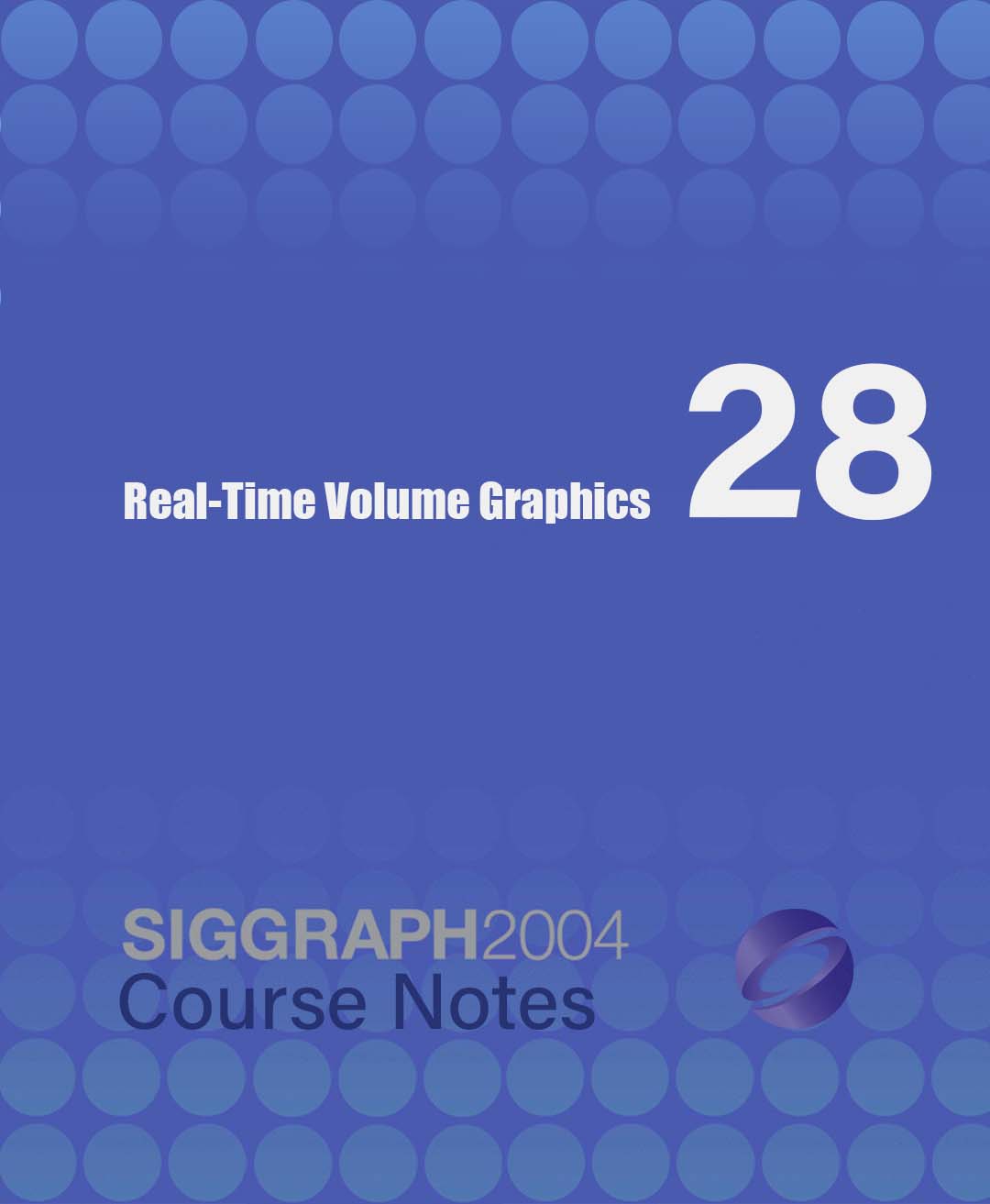“Real-Time Volume Graphics” by Hadwiger, Rezk-Salama, Engel, Kniss, Lefohn, et al. …
Conference:
Type(s):
Entry Number: 28
Title:
- Real-Time Volume Graphics
Course Organizer(s):
Presenter(s)/Author(s):
Abstract:
Prerequisites
Working knowledge of computer graphics and some background in graphics programming APIs like OpenGL or DirectX. Familiarity with basic visualization techniques is helpful but not required.
Intended Audience
Practitioners in both scientific visualization and real-time rendering, including the entertainment community.
Description
The tremendous evolution of programmable graphics hardware has made high-quality, real-time volume graphics a reality. In addition to the traditional application of rendering volume data in scientific visualization, interest in applying these techniques for real-time rendering of atmospheric phenomena and participating media such as fire, smoke, and clouds is growing rapidly. This course covers both applications in scientific visualization (for example, medical volume data) and real-time rendering (for example, advanced effects and illumination in computer games), in detail. Attendees learn techniques for harnessing the power of consumer-grade graphics hardware and high-level shading languages for real-time rendering of volumetric data and effects. Beginning with basic texture-based approaches including hardware ray casting, the algorithms are improved and expanded incrementally, covering local and global illumination, scattering, pre-integration, implicit surfaces and non-polygonal isosurfaces, transfer function design, volume animation and deformation, dealing with large volumes, high-quality volume clipping, rendering segmented volumes, higher-order filtering, and non-photorealistic volume rendering. Attendees receive documented source code covering details that are usually omitted in publications.




